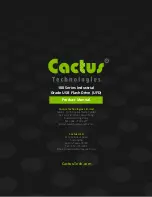
2
Safety
2.5
Special
warnings
INTILION scalebloc 0.5C
23
2.5.3
Dangers due to lithium-ion batteries
There is a considerable risk to health and life in the event of electric shocks at battery
voltages higher than just 60 V.
Lithium-ion batteries can deliver a high short-circuit current even when they appear to be
discharged.
At temperatures of over 70 °C, there is a risk that the lithium-ion batteries could burst,
causing electrolyte fluid and gases to escape.
Electrolyte and gases may escape as a result of mechanical damage (e.g. impact),
electrical faults (e.g. short circuit, deep discharge, overloading) or thermal impacts (e.g.
internal overheating). Contact with the escaping electrolyte or gases can lead to
breathing difficulties, suffocation or intoxication, or can cause cancer.
–
The lithium-ion batteries must only ever be handled by a specialist. Always used
isolated tools when working.
–
Always wear protective work clothing and protective gloves when working on the
lithium-ion batteries.
–
Only transport the lithium-ion batteries in their original packaging or in packaging that
corresponds to the applicable guidelines.
Keep the packagings in a safe place.
–
Do not heat up the lithium-ion batteries beyond the maximum permissible temperature
and do not burn them.
–
Make sure that there are no external ignition sources.
–
Do not short-circuit the lithium-ion batteries and do not cause them any mechanical
damage (do not pierce, deform, destroy etc.).
–
When handling conspicuous lithium-ion batteries (leaking contents, deformations,
discolourations, dents etc.), wear protective work clothing and protective gloves and
ensure sufficient ventilation.
Do not breathe in any escaping gases.
–
Cover the terminals with masking tape to secure the damaged lithium-ion batteries
against short circuit.
When packaging damaged lithium-ion batteries, make sure that they are as
hermetically sealed as possible, and surround with dry sand, calcium carbonate
powder (CaCO
3
) or Vermiculite.
Wherever possible, store damaged lithium-ion batteries outside of buildings and in a
leak-proof, shock-proof and fire-proof outer packaging.
Use warning signs to mark and secure the storage location.
Have the lithium-ion batteries disposed of by a certified specialist company or by
INTILION GmbH
(see Section “10 Decommissioning and disassembly”).
Summary of Contents for scalebloc 0.5C
Page 33: ...2 Safety 2 10 Obligations of the system manager INTILION scalebloc 0 5C 31 ...
Page 34: ......
Page 46: ...4 Transport and storage 3 3 Technical specifications 44 INTILION GmbH ...
Page 77: ...5 Installation 5 12 Establishing the mains connection INTILION scalebloc 0 5C 75 ...
Page 78: ......
Page 98: ...6 Commissioning 6 8 Contacting the Hoppecke Service team 96 INTILION GmbH ...
Page 100: ......
Page 102: ...8 Fault 100 INTILION GmbH ...
















































